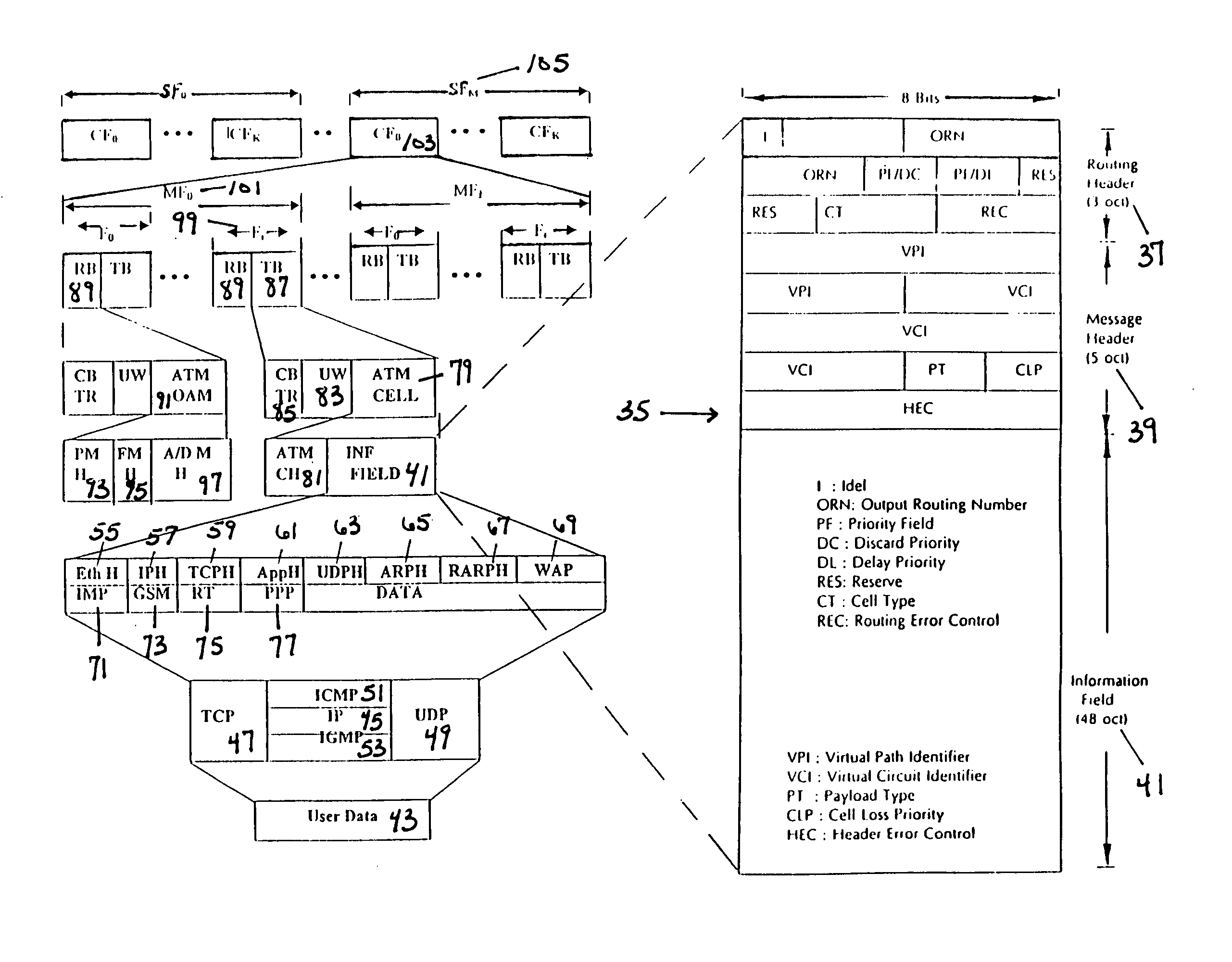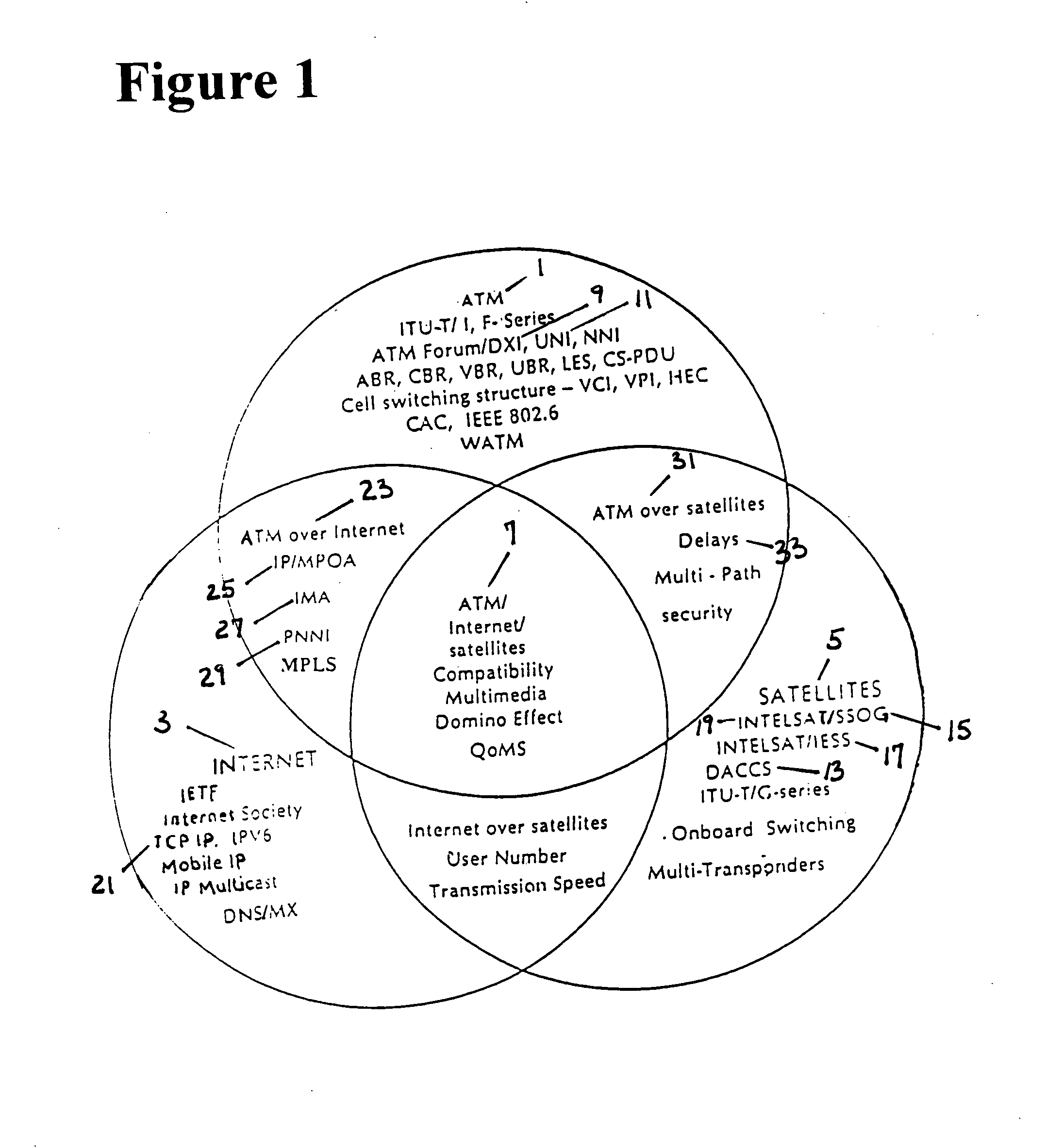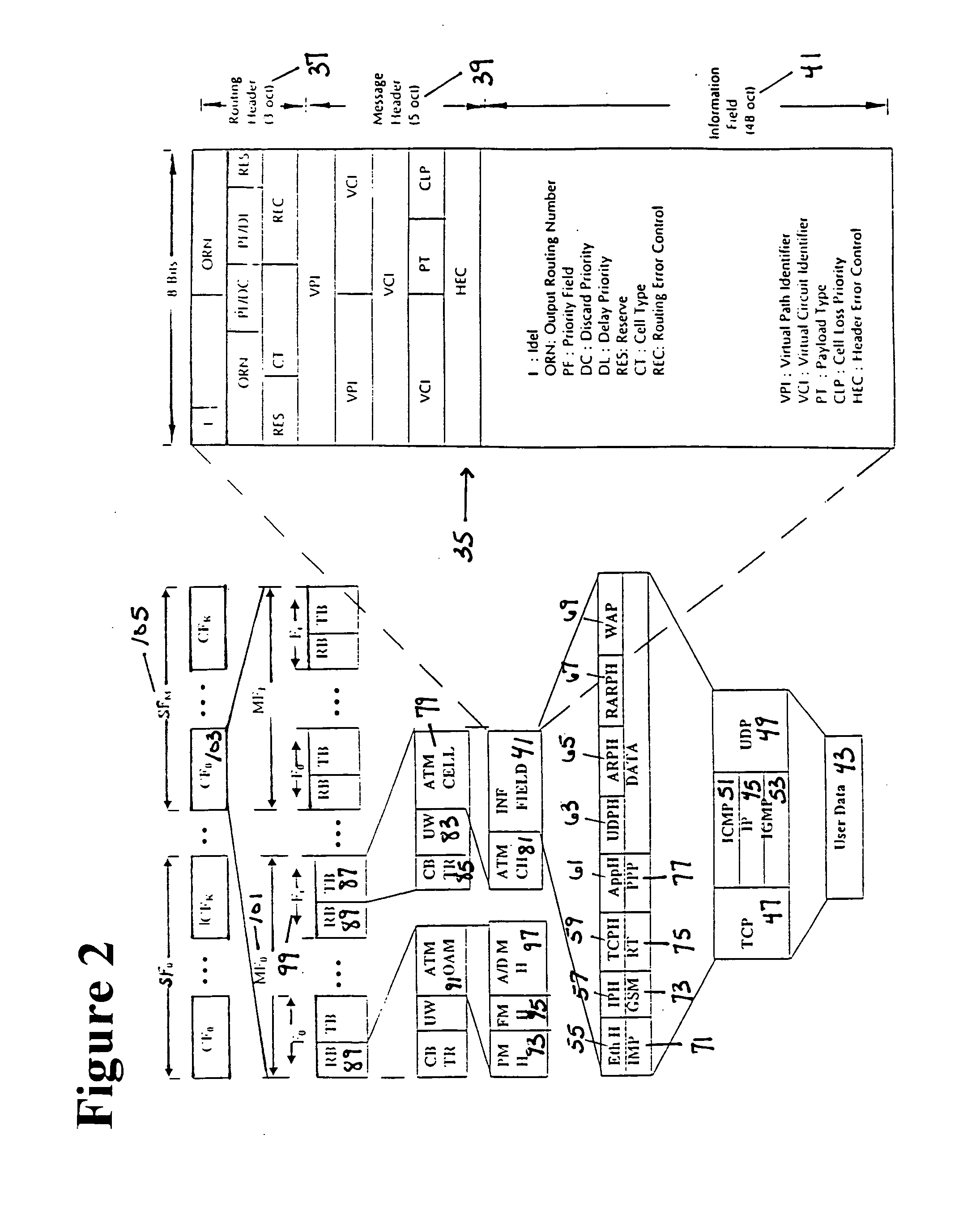Error coding in asynchronous transfer mode, internet and satellites
a technology of asynchronous transfer mode and error coding, which is applied in the field of error coding in asynchronous transfer mode, internet and satellites, can solve the problems of code that cannot correct a single error within 32 bits of cell header information, additional problems arise, and header codec produces additional errors in decoder output, etc., to achieve the effect of maximum impact, easy threshold decodability, and excessive implementation
- Summary
- Abstract
- Description
- Claims
- Application Information
AI Technical Summary
Benefits of technology
Problems solved by technology
Method used
Image
Examples
example 1
[0307]For PG(3, 2), let s=1.
b=(1+2+22+23)(2+22+23) / (1+2)2—=35 lines
ν=1+2+22+23=15 points
k=1+n=3=Every line of PG(3,2) contains 3 points. γ=7, and λ=1
[0308]Since n=2, GF(2) contains only 0,1 elements. The 15 points are
[0309] 100001000010000111001010100101100101001111101101101101111111
[0310]The lines of PG(3,2) can be obtained by taking pairs of points as
[0311]λ0 p0+λ1 p1 for (λ0, λ1)=(0, 1), (1, 0), (1, 1).
[0312]From the geometrical parameters, a block design is defined as an arrangement of ν elements in b sets, each of which contains k elements; each element can be shared by exactly r sets; every pair of elements occurs in exactly λ sets, and every element occurs at most once in a set. Thus a block design is characterized by the five parameters ν, b, k r, and λ. The necessary conditions for the existence of a block design are:
bk=νr,and r(k−1)=λ(ν−1). (62)
[0313]The conditions directly come from the definition: the first condition says that there are a total of ν elements; each of th...
example 2
[0315]The block design with parameters ν=6, b=10, k=3, r=5, and λ=2 is:
[0316] BoB1B2B3B4B5B6B7B8B9010025I14012215332025533344454
[0317]The corresponding incidence matrix of the block design is:
[0318] 101100001111010011000110100101001111100000000111111100110010
[0319]This matrix has b=10 blocks or columns, ν=6 rows, each block has k=3 non-zero elements, each row has r=5 non-zero elements, and any pair of rows has exact λ=2 1's in common. If this matrix is amended with an identity matrix, it becomes the generator matrix of the (16, 6, 6) block code.
example 3
[0320]The incidence matrix of the block design ν=5, b=10, k=3, r=6, λ=2 is:
[0321] 00111010111001110101110011101011100011000111010110
[0322]If we add a 6×6 identity matrix to the left of above, we have:
[0323]100000100000100000100000100111010111001110101110011101011100011010111010110
[0324]Which is the generator matrix of the BCH (15, 5, 7) with generator polynomial:[0325]G(X)=X10+X8+X5+X4+X2+X+1
[0326]Gallager formulateded, analyzed, and constructed Low Density Parity Check (LDP) codes. This class codes with parameters (n, j, k) is defined from a parity check matrix of n columns that have j ones in each column, k ones in each row, and zero. Low density implies that both j and k values are small in comparison to n LDP codes are threshold decodable. Each digit in a received code word is checked by j parity check equations because the number of 1's is sparse, other code word digits are not likely to be checked by the j equations. With higher probability an error digit is more likely to b...
PUM
 Login to View More
Login to View More Abstract
Description
Claims
Application Information
 Login to View More
Login to View More - R&D
- Intellectual Property
- Life Sciences
- Materials
- Tech Scout
- Unparalleled Data Quality
- Higher Quality Content
- 60% Fewer Hallucinations
Browse by: Latest US Patents, China's latest patents, Technical Efficacy Thesaurus, Application Domain, Technology Topic, Popular Technical Reports.
© 2025 PatSnap. All rights reserved.Legal|Privacy policy|Modern Slavery Act Transparency Statement|Sitemap|About US| Contact US: help@patsnap.com



